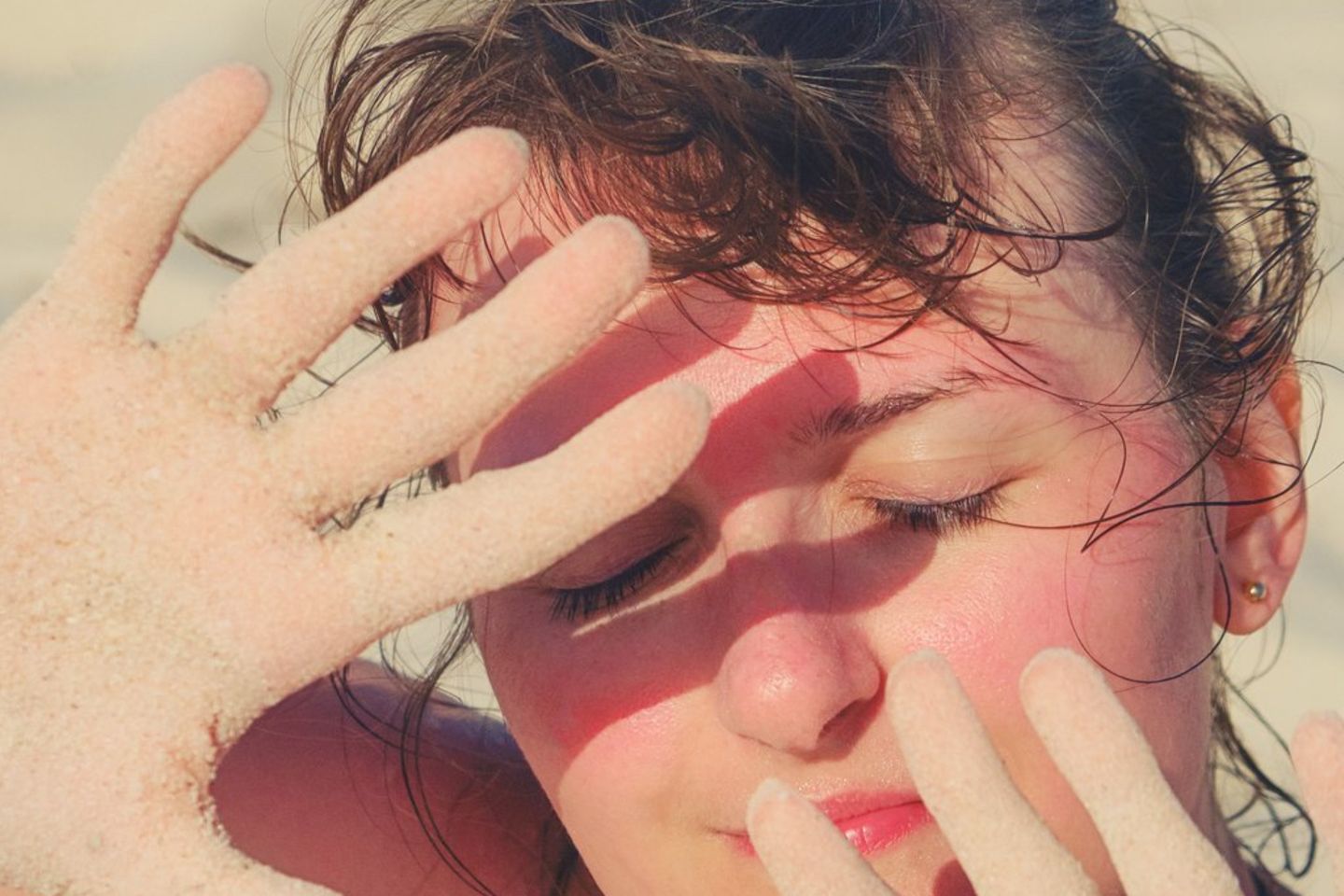wheals
Which really helps with a sun allergy
How can you protect yourself from an unpleasant sun allergy?
© Zhuravlev Andrey/Shutterstock.com
Itching, inflammation and blisters after sunbathing? You can do this against a sun allergy.
If you develop pustules, hives, and an itchy rash on your skin after sunbathing, you probably have one sun allergy. Strictly speaking, this is not a real allergy, but a reaction of the skin to UV radiation. The most common form of sun allergy is polymorphic light eruption (PLD), which affects around 20 percent of the population in Germany.
The symptoms of an acute sun allergy can be alleviated with various measures – for example with medication containing cortisone. But there are also a few home remedies that can alleviate the symptoms and counteract the unpleasant skin reactions. The most important thing is to avoid further exposure to the sun. There are also things you can do to prevent sun allergies.
Home remedies for sun allergy
Aloe Vera soothes the skin and relieves itching, making it an ideal home remedy for sun allergies. The gel works best when chilled, alternatively you can also apply the juice from the leaf of the aloe vera plant to the affected areas. If you buy a finished product, you should only use fragrance-free versions, otherwise fragrances will only irritate the skin further. Marigold ointment also accelerates the healing of irritated skin and helps with sun allergies, while pure lavender oil reliably relieves itching.
Tea tree oil has been used by Australian Aborigines for many centuries to treat skin after exposure to the sun. The oil from the leaves of the tea tree has an antiseptic effect and does not irritate the skin. It can be used for all sorts of skin irritations. Simply mix a few drops into a moisturizing cream and apply to skin.
Quark compresses for sunburn are a well-known home remedy, but they can also help with sun allergies. Quark cools and soothes the skin, relieving itching and minor inflammation. To do this, simply pour the quark generously into a fresh kitchen towel and place it on the affected areas.
The mineral-rich healing earth also has an anti-inflammatory effect and is good for sun-damaged skin. To use it, simply mix the healing clay with cold water to form a spreadable paste and then apply it to the affected areas. Then let it dry and rinse with water, and the procedure is complete.
Conventional apple cider vinegar is a very effective home remedy for itching as a result of sun allergy. Those affected can rub the skin with a solution of two teaspoons of apple cider vinegar and 1/4 liter of boiled water. Practical: The tincture does not have to be rinsed off, the unpleasant vinegar smell also evaporates quite quickly.
Another unusual home remedy from the kitchen that is considered an insider tip for sun allergies is baking powder. It is said to relieve itching and stimulate healing. To do this, add a small cup of baking soda to a cold bath and soak your skin in it for about 15 minutes.
Prevent sun allergy
Anyone who knows that they suffer from a sun allergy should take a few precautions before sunbathing. At the beginning of summer you should slowly get used to the sun. Sunscreen with a high sun protection factor and UVA filter should be used every time you sunbathe – don’t forget to apply sunscreen regularly! During the sun-intensive time (11 a.m. to 5 p.m.) you should avoid direct sunlight and stay in the shade.
Many dermatologists offer UV light therapy to “accustom” the skin to light. Tablets taken a few weeks before sunbathing can also help. Calcium is widely used when it comes to preventing sun allergies. Even if the intake cannot prevent the skin reaction triggered by the sun’s rays, it can at least have a positive influence on it. Tablets with the ingredients folic acid, vitamin B3 and zinc can also help preventively.
Important: If you have a severe sun allergy, you should always consult a doctor!
